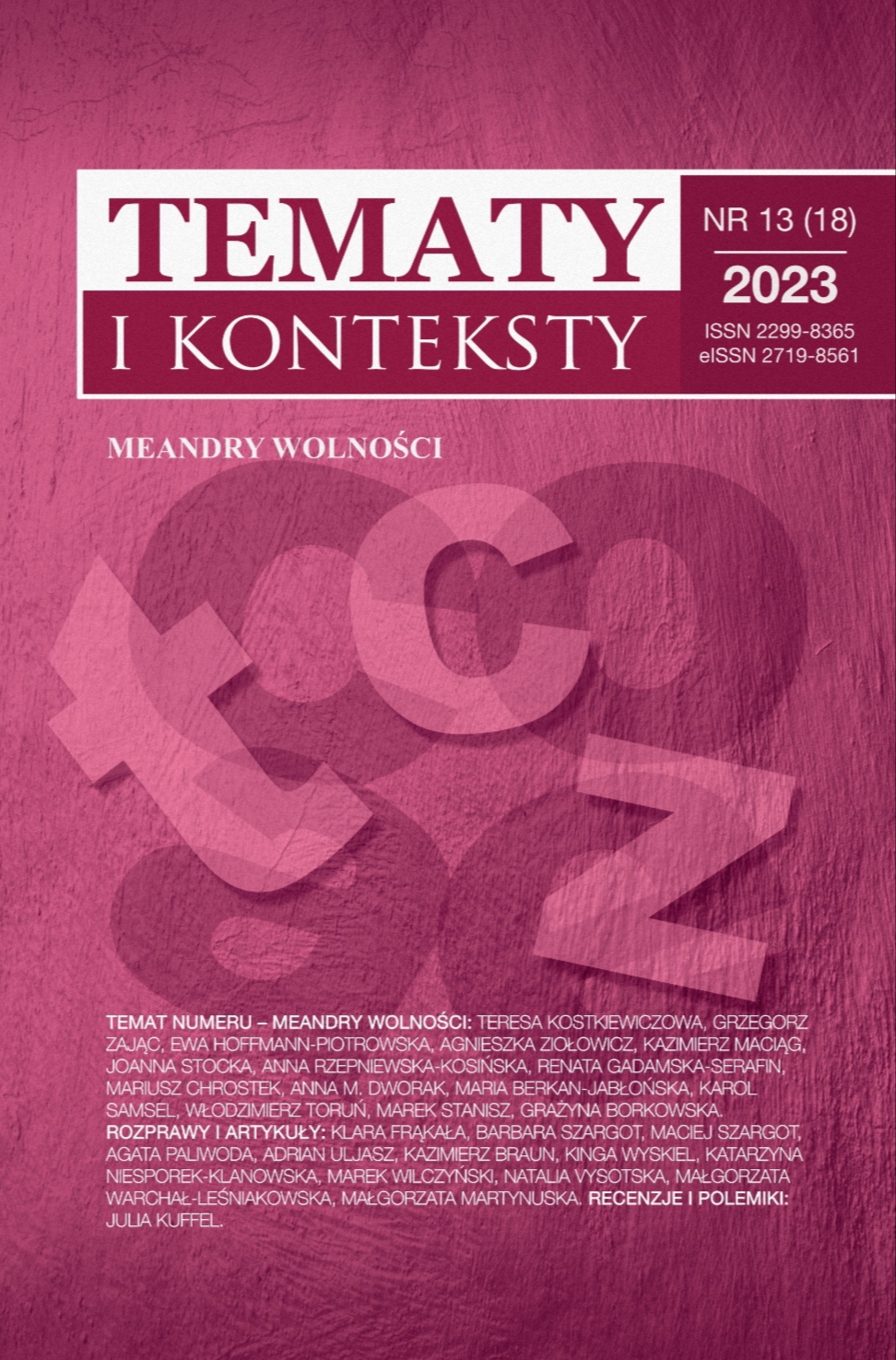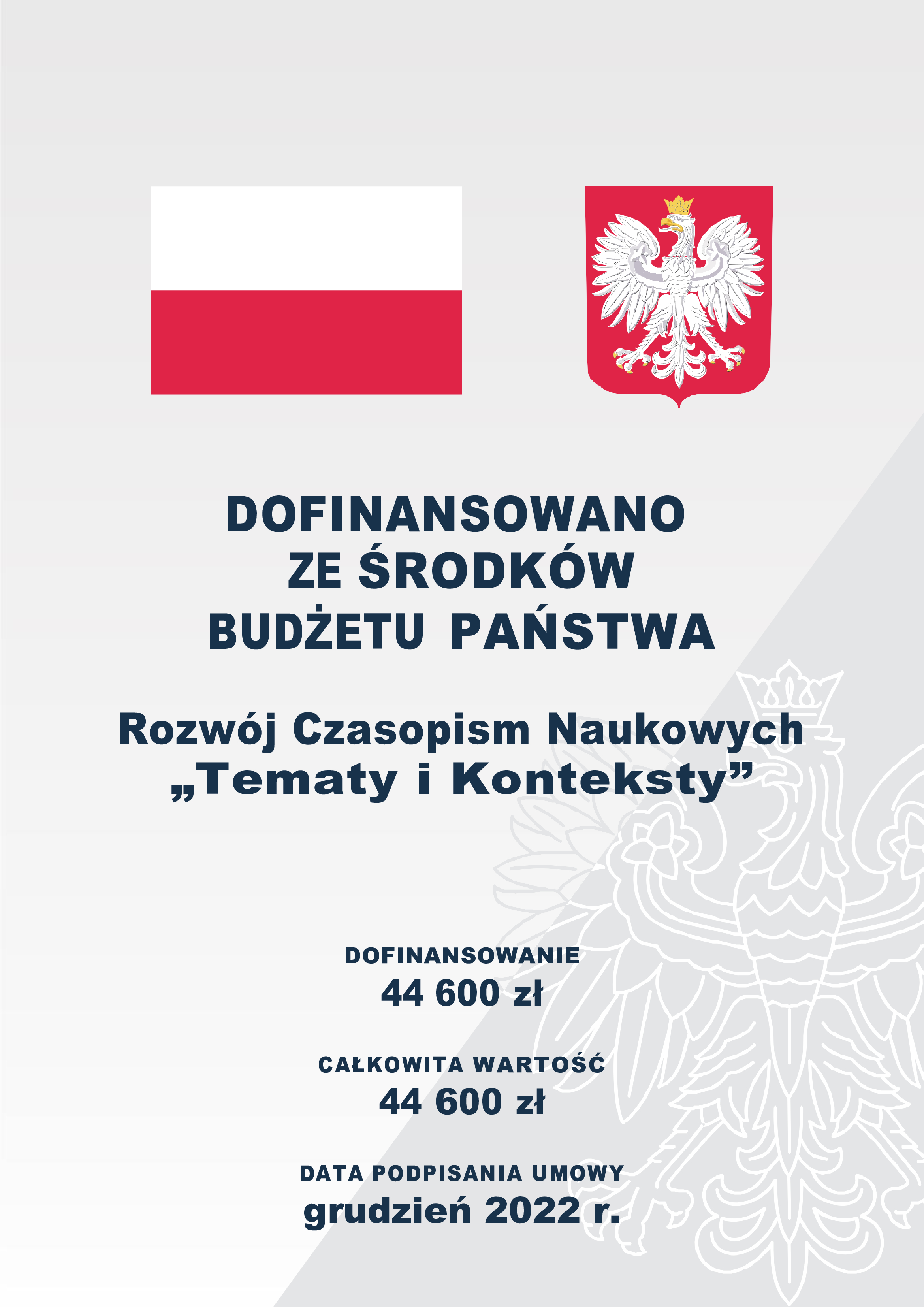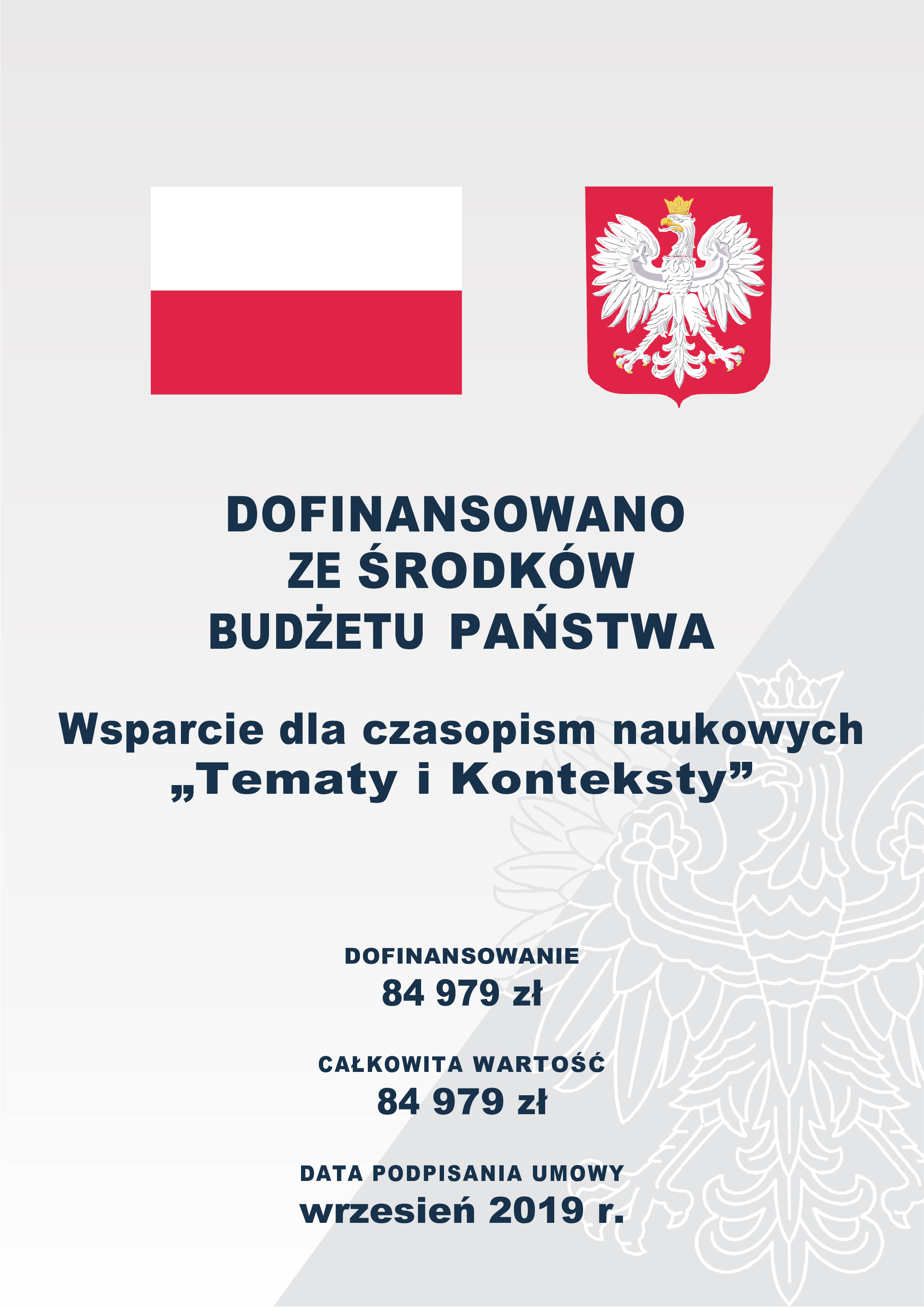The Second Reform of Theatre
DOI:
https://doi.org/10.15584/tik.2023.20Keywords:
Second Theatre Reform, First (Great) Theatre Reform, acting, community, directing, playwrighting, theatre spaceAbstract
The history of theatre in the 20th century distinguishes two theatre reforms. The first took place from the final years of the 19th century to the late 1930s. The second was from the mid-1950s to the late 1980s. These were movements of renewal and modernization of the art of theatre. Started by individual artists and small groups, assisted by playwrights and theorists, who were often the artists themselves, both reforms gradually reached wider areas of theatre life. The Second Reform was a reformist movement of young, avant-garde, rebellious, experimental, and searching theatre. The movement was born in the 1950s in Poland within student and alternative theatres and in the United States, as Off-Broadway and then Off-Off-Broadway. It reached tremendous expression in the 1960s in the work of Jerzy Grotowski’s Laboratory Theatre, Bread and Puppet Theatre, Living Theatre and several other companies in many countries around the world. It matured in the seventies, bringing out the powerful theatre of Tadeusz Kantor, and extremely original “Gardzienice” of Włodzimierz Staniewski.
However, it did not reach some areas of theatre at all. Throughout the West, in South America, Australia, in Japan, the Second Reform was a challenge and an alternative to commercial, popular, traditional theatre. In this part of Europe, which was under the control of the Soviet Union, the Second Reform was a challenge to totalitarian regimes; it undermined totalitarian censorship and tore the communist iron curtain.
Its productions were manifestations of freedom. In the field of a performance’s creation, the Second Reform brought out and accentuated the communality and processuality of theatre art. In the field of directing, the Second Reform decisively placed the director at the head of the team of creators preparing and executing a theatrical performance. In the field of acting, the Second Reform introduced “acting of being” in place of “acting of character.” In the field of space, the Second Reform sought to integrate the playing area and the observation area of the show; its lasting achievement became a theatre with variable space – “The black box”. In the field of literature, the Second Reform questioned the underlying function of drama in the theatre, practiced “writing on stage,” with the actors themselves “creating” the text of the show, and the director “adapting” existing dramas. The author of this article witnessed, chronicled and participated in the Second Theatre Reform. He published books about it and created production in its spirit.
Downloads
References
Barba E., Beyond Floating Islands, Village Station NY 1986.
Grotowski J., Ku teatrowi ubogiemu, Wrocław 2007.
Grotowski J., Teksty zebrane, Wrocław 2012.
Kantor T., Pisma, t. I: Metamorfozy, t. II: Teatr śmierci, t. III: Dalej już nic... Wrocław–Kraków 2004. Tamże obszerna bibliografia.
Schechner R., Environmental Theater, New York 1973. Tamże obszerna bibliografia.
Schechner R., Between Theatre and Antropology, Philadelphia 1985.
Bablet D., Les Revolutions scenique du XXe siècle, Paris 1975.
Holmberg A., The Theatre of Robert Wilson, Cambridge 2005.
Jotterand J., Nowy teatr amerykański, Warszawa 1976.
Kornaś T., Włodzimierz Staniewski i Ośrodek Praktyk Teatralnych Gardzienice, Kraków 2013. Tamże obszerna bibliografia.
Leszek Mądzik. Teatr, Scenografia, Warsztaty, Fotografia, Plakat, Kielce 2009.
Leszek Mądzik i jego teatr, Warszawa 1998.
Tadeusz Kantor. Od „Małego dworku” do „Umarłej klasy” [zbiór esejów], M. Hermansdorfer, K. Pleśniarowicz, J. Kłossowicz, Wrocław–Kraków 2010.
Taranienko Z., Praktyki teatralne Włodzimierza Staniewskiego, Lublin 1977.
Teatr bezsłownej prawdy. Scena Plastyczna Katolickiego Uniwersytetu Lubelskiego, red. W. Chudy, Lublin 1990.
Tyszka J., Teatr Ósmego Dnia – pierwsze dziesięciolecie (1964–1973), Poznań 2003. Tamże obszerna bibliografia.
Tyszka J., To się czasem zdarza, Poznań 2016.
Teatr Wspólnoty, Kraków 1972.
Nowy teatr na świecie, Warszawa 1975.
Druga Reforma Teatru?, Wrocław 1979.
Druga Reforma Teatru. Ludzie – idee – zdarzenia, Warszawa 2022.
Downloads
Published
How to Cite
Issue
Section
Categories
License
Copyright (c) 2023 Tematy i Konteksty

This work is licensed under a Creative Commons Attribution-NonCommercial-NoDerivatives 4.0 International License.




